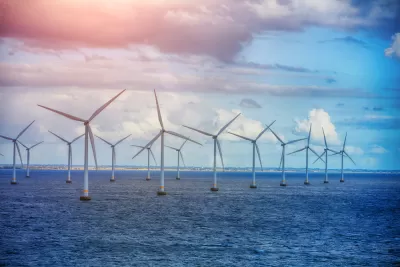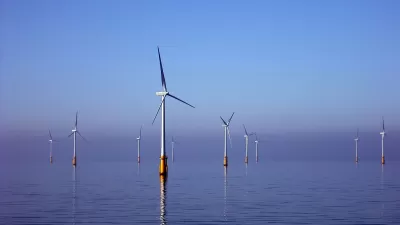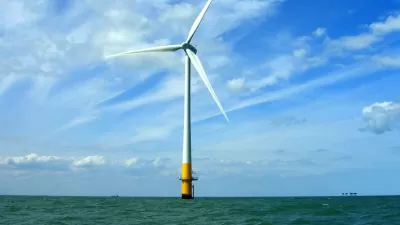If approved, the plan to build a 2,000-megawatt facility off the coast of Washington State would be a milestone for floating offshore wind production in the United States.

A proposed offshore wind project in Washington state would be the largest of its kind on the West Coast, reports David Iaconangelo. “The proposal could include up to 2,000 megawatts of electricity, enough for about 800,000 homes, produced from turbines mounted on platforms and moored to the deep ocean floor about 43 miles off the coast of Grays Harbor County, Wash.”
The proposal, like other offshore wind plans, will likely face criticism from environmental groups, the fishing industry, and local tribes. “Yet it underscores the growing expectations around a new, floating generation of offshore wind turbines, which have never been built in the United States, even at pilot scale.” According to Iaconangelo, “[Bureau of Ocean Energy Management (BOEM)] spokespeople told E&E News that the agency is reviewing the plan and will work with tribes, the state of Washington and others on the next steps.”
“By 2030, Washington state’s utilities are required to get at least 80 percent of their electricity from carbon-free resources, followed by 100 percent in 2045, under the terms of a 2019 law.” But the state has been moving more slowly than others, the article notes. “State governors have been major influences in the development of offshore wind on the East Coast by pledging to buy power from the resource. Washington state has no such commitment to purchase offshore wind power as of yet.” Other concerns include a potentially outdated electric grid and the higher cost of floating offshore wind as compared to fixed-bottom or on-shore wind production.
FULL STORY: Company proposes largest offshore wind farm on West Coast

Alabama: Trump Terminates Settlements for Black Communities Harmed By Raw Sewage
Trump deemed the landmark civil rights agreement “illegal DEI and environmental justice policy.”

Study: Maui’s Plan to Convert Vacation Rentals to Long-Term Housing Could Cause Nearly $1 Billion Economic Loss
The plan would reduce visitor accommodation by 25% resulting in 1,900 jobs lost.

Why Should We Subsidize Public Transportation?
Many public transit agencies face financial stress due to rising costs, declining fare revenue, and declining subsidies. Transit advocates must provide a strong business case for increasing public transit funding.

Paris Bike Boom Leads to Steep Drop in Air Pollution
The French city’s air quality has improved dramatically in the past 20 years, coinciding with a growth in cycling.

Why Housing Costs More to Build in California Than in Texas
Hard costs like labor and materials combined with ‘soft’ costs such as permitting make building in the San Francisco Bay Area almost three times as costly as in Texas cities.

San Diego County Sees a Rise in Urban Coyotes
San Diego County experiences a rise in urban coyotes, as sightings become prevalent throughout its urban neighbourhoods and surrounding areas.
Urban Design for Planners 1: Software Tools
This six-course series explores essential urban design concepts using open source software and equips planners with the tools they need to participate fully in the urban design process.
Planning for Universal Design
Learn the tools for implementing Universal Design in planning regulations.
Smith Gee Studio
Alamo Area Metropolitan Planning Organization
City of Santa Clarita
Institute for Housing and Urban Development Studies (IHS)
City of Grandview
Harvard GSD Executive Education
Toledo-Lucas County Plan Commissions
Salt Lake City
NYU Wagner Graduate School of Public Service




























